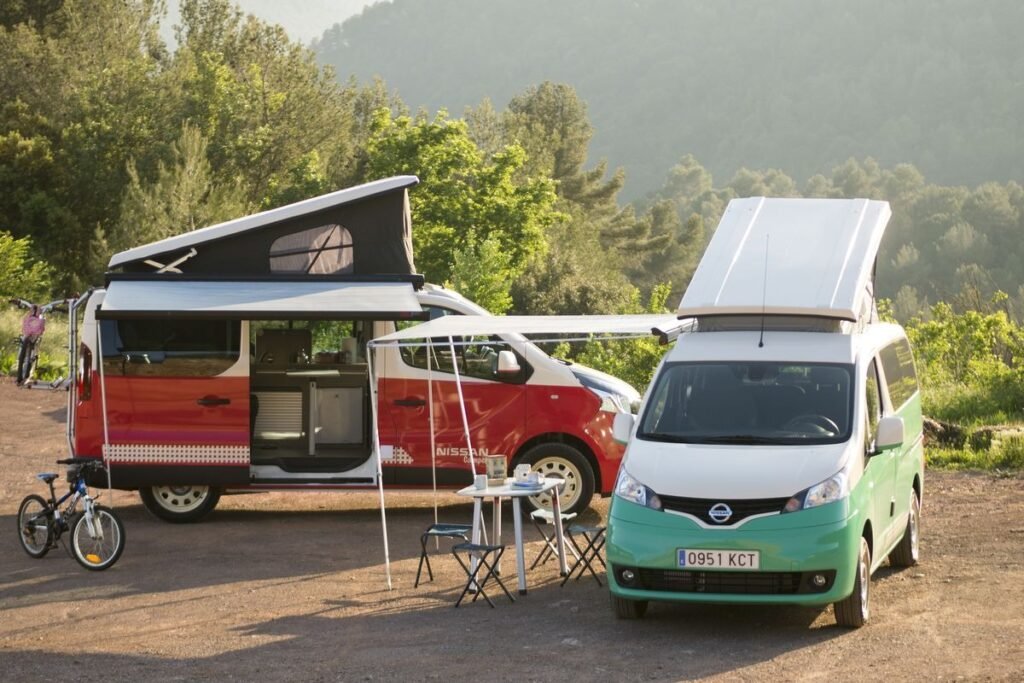Mini, Mid‑Size vs High‑Roof Vans: Which One Suits You?
I’ve spent a good amount of time researching and traveling in various types of vans from compact city campers to towering high-roof giants. One thing I’ve learned? Choosing the right van isn’t just about size it’s about lifestyle. Whether you’re considering a weekend getaway vehicle or planning to live on the road full-time, understanding the pros and cons of mini, mid-size vs high-roof vans can save you from costly mistakes.
What You Should Know Before Choosing a Van
Let’s start with a simple fact: not all vans are created equal. Each van type has its strengths and limitations based on your travel needs, comfort expectations, and parking situation. Before diving deep into van sizes, ask yourself:
-
Do I want to stand up fully inside my van?
-
How many people will travel with me regularly?
-
Will I be staying in urban areas, forests, or off-grid locations?
-
How important is stealth or fuel efficiency?
Once you get clear on these questions, choosing between mini, mid-size, and high-roof vans becomes easier.
Mini, Mid‑Size vs High‑Roof Vans: The Core Differences
Each van size class offers something unique. I’ll break it down for you with real-world context.
Mini Vans (Compact and City-Friendly)
Mini camping vans are often based on standard minivan models like the Toyota Sienna or Honda Odyssey. Their compact size means:
-
Easy to park in cities or tight spots.
-
Good fuel efficiency, often better than larger vans.
-
Lower cost to buy and maintain.
-
Ideal for solo travelers or weekend trips.
However, mini vans usually don’t allow full standing height and offer limited storage. That said, for quick trips or stealth camping, they work surprisingly well.
Mini camping vans offer one of the most cost-effective ways to dip your toes into van life without committing to a full build.
Mid‑Size Vans (Balanced and Versatile)
When I first transitioned from a mini van to a mid-size model like the Ford Transit Connect LWB, I noticed the extra comfort instantly. Here’s why:
-
More interior space without being massive.
-
Easier to convert into a livable space.
-
Still fits in most standard parking spaces.
-
Better insulation options for varying weather.
Of course, they come at a slightly higher price and may not have the standing height you’re after unless modified. But for couples or travelers who want more than a bed-in-the-back setup, they’re perfect.
If you’re debating mini van vs mid size van, mid-size gives you room to stretch without the stress of driving a full cargo van.
High‑Roof Vans (Spacious and Long-Term Ready)
Once you step into a high-roof van like the Mercedes Sprinter, Ram ProMaster, or Ford Transit HR, it feels like a studio apartment on wheels. These vans offer:
-
Full standing room, ideal for cooking or working.
-
Ample storage for gear, water tanks, and supplies.
-
Comfortable living for long-term vanlifers.
-
Room for solar panels and extended batteries.
But keep in mind:
-
More expensive to buy and convert.
-
Harder to park, especially in cities or garages.
-
Lower fuel efficiency compared to smaller vans.
When doing a high roof van comparison, you’ll notice the added height dramatically improves comfort but comes with increased cost and attention.
Van Size Comparison Guide – Pros and Cons at a Glance
Sometimes, seeing it all laid out helps the decision process. Here’s how each size stacks up:
| Feature | Mini Van | Mid‑Size Van | High‑Roof Van |
|---|---|---|---|
| Fuel Efficiency | Excellent | Good | Average |
| Parking Flexibility | High | Medium | Low |
| Interior Space | Limited | Moderate | Spacious |
| Conversion Cost | Low | Moderate | High |
| Headroom | None | Partial (modifiable) | Full Standing Height |
| Long-Term Living | Not Ideal | Acceptable | Best Option |
This van size comparison guide helps you weigh function over form especially if you’re leaning toward a long-term commitment.
Best Van Size for Camper Conversion – What Matters Most?
When it comes to conversions, the goal is to strike a balance between space and mobility. I learned the hard way that overbuilding in a small van can ruin your experience. Ask yourself:
-
Will you need a fixed bed or convertible setup?
-
Do you plan to add a kitchenette or toilet?
-
How often will you camp in urban vs. rural settings?
The best van size for camper conversion depends on your unique lifestyle, not just what’s trending on social media.
If you’re doing your first build and prefer simplicity, start small. You can always upgrade later.
Mini vs High Roof Van for Travel – What I’ve Learned on the Road
I’ve traveled in both a stealthy minivan through urban zones and a tall Sprinter through mountains and coastlines. Each had its perks.
-
In cities, my minivan allowed me to blend in and park freely.
-
On the road, the high-roof gave me the comfort of a small home.
So, mini vs high roof van for travel? It boils down to where you’re going and how long you’re staying. Urban adventurers may lean mini, while long-term roamers love the vertical space.
Camper Van Size Options for Specific Lifestyles
Different lifestyles demand different vans. Here’s how I’d match them:
-
Solo digital nomads: Mini vans (for stealth and cost)
-
Weekend warriors: Mid‑size vans (for balance and short trips)
-
Full-time families or couples: High‑roof vans (for space and comfort)
The variety of camper van size options means there’s a fit for everyone you just need to know your goals.
Which Van Size Is Right for Me?
To make this personal: I started in a mini, upgraded to a mid-size, and now dream of a high-roof. Why? Because my travel habits evolved.
Ask yourself these:
-
Do I want a simple mattress setup or full kitchen?
-
Is daily driving important?
-
Can I afford the conversion and maintenance costs?
The question of which van size is right for me often reveals what kind of traveler you are or want to become.
FAQs
Q1: Is a mini camping van suitable for long road trips?
Yes, if you’re solo and pack light. It’s cozy and affordable but may lack full comfort for extended living.
Q2: Can you stand in a mid‑size van?
In most cases, no. Some models allow custom high-top additions, but stock versions generally don’t have full standing room.
Q3: What is the most fuel-efficient van type?
Mini vans take the lead in fuel efficiency. High-roof vans consume more due to size and weight.
Q4: What’s the best van for full-time van life?
A high-roof van offers the most space and comfort for daily living. It suits long-term travelers better.







